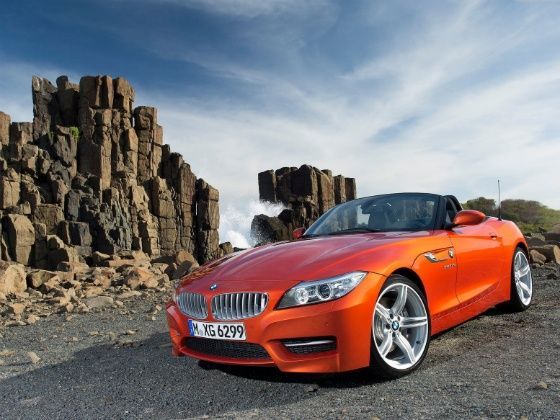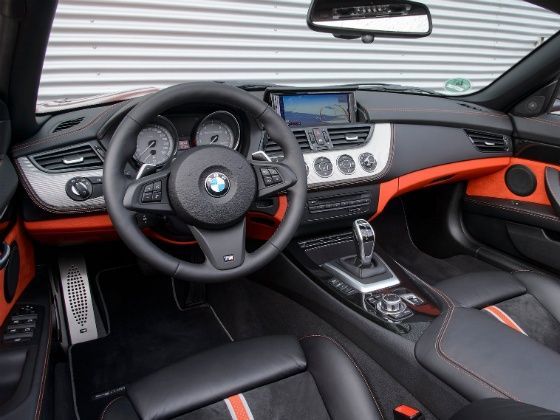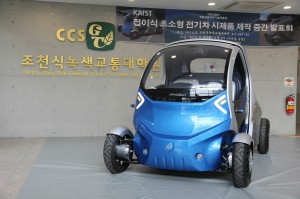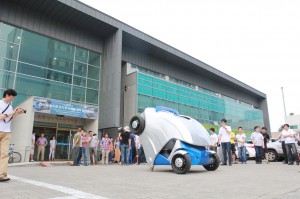n fact, BMW shied away from the term SUV, instead minting a new phrase: Sports Activity Vehicle.
As one might expect, the BMW-branded utility vehicle drove smaller than it was and offered excellent comfort. One could even have described it as sporty. And many did.
Fast forward nearly a decade and a half and the these attributes continue to be emphasized on thethird generation X5.
SAME OLD STYLE
Judging from the exterior design, it’s easy to jump to the conclusion that the new X5 is a lot like the old one. Sure it has the same wheelbase, but this new generation of X5 is wider, lower and longer, growing discreetly in size.
There are also a few new details that help this X5 stand out from previous models, like the new look headlights that connect to the signature grille. Fog lights have moved up and are more centered, while down low there are new “Air Breather” slats cut into the front bumper, with “Air curtain” vents on the fenders, both of which to combine to reduce drag around the front wheels. Around back you’ll spot a redesigned set of tail lights and bumper-integrated exhaust pipes.
Modernized? Certainly. But if the look of BMW’s premium crossover didn’t work for you in the past, the new model will do little to change your mind.
Helping the big vehicle stay nimble and fuel conscious, BMW has cut almost 200 lbs. of weight. Combined with other improvements like the standard 8-speed automatic, electric power steering and improved performance from the 4.4L V8 engine, you can expect to get about two more miles per gallon on the highway with the most powerful xDrive50i models.
Those looking for the best fuel economy will find the diesel powered xDrive35d to fit the bill, although the diesel engine requires a $1,500 premium over the similarly equipped gasoline model. Finally, a new base sDrive35i model is available using the 3.0L turbo-six motor but is without all-wheel drive, sending power to the rear wheels.
INTERIOR AMBIENCE
Step into the new X5 and it’s clear that BMW put a focus on delivering a premium atmosphere. Gone are the odd hard-plastics and in their place is not only a sense of luxury, but style too. While BMW’s are known for swaying on the conservative side of things (save for red-leather) when it comes to interior design, the X5’s dash and cabin shows a bit more flow and flair.
Two specialty interior design packages are available: one featuring Ivory White Nappa Leather upholstery contrasted with a grey leather dash and oak wood trim, while the Mocha Interior design package features sexy brown upholstery (which has a slick sheen just like roasted coffee beans) and is paired with black leather on the dash, and a brighter wood trim. Both design packages represent the sort of luxury and trim you would expect in the brand’s flagship 7 series.
The X5 comes standard with just enough goodies to set it apart from its competitors. The new iDrive system works wonderfully with the standard navigation system thanks to a new touch-pad placed right on top of the controller.
Other excellent standard features include heated seats, a basic parking assist, a power lift gate, a panoramic moon roof and two-zone automatic climate control.
SEE ALSO: 2013 Mercedes ML550 Review
Our models also showcased the upgraded audio systems. Catering to the high-class audiophiles BMW offers either an $875
HarmanKardon system, or a 1,200-watt, 16 speaker Bang & Olufsen system. While the B&O system is quite impressive, it’s hard to recommend spending $3,635 upgrading to it over the already sublime Harman system.
Like BMW’s other offerings, choosing an X5 fit for you means sifting through plenty of pricey options. Our top pick includes the Driver Assistance package which adds a spiffy heads-up display and rear-view camera for $1,400 – the latter of which really should be standard on all trims.
BMW AND DYNAMICS GO LIKE PEANUT BUTTER AND CHOCOLATE
The testers we had a chance to pilot also featured BMW’s optional dynamic handling package. For $4,500 it adds an adaptable suspension with an automatic self-leveling rear suspension. Expensive, yes, but from behind the wheel it feels worth every penny.
Past X5s felt in tune with the road but to a fault, meaning a few bumps and potholes could interrupt the smooth driving experience. The new X5 features a revised suspension setup and with the additional dynamic handling package, proves to be a huge improvement. Not only is the ride smoother but noticeably quieter too.
Click the dynamic handling switch to Sport or Sport + and you’re reminded just what made the X5 so popular in the first place. The electric power steering becomes heavy and precise, while the chassis feels tighter. Throttle response, which is already excellent in the turbocharged V8 model, gets a bit more sensitive and the transmission holds on to gears for longer, foregoing fuel economy, while making this vehicle feel like one of BMW’s sportier sedans.
Still, the X5 is not without its compromises. While the ability to turn on its sporty mode with the flick of a button is appreciated, its default settings are rather lazy and uninvolved; unbecoming of a BMW.
Speaking of un-BMW-like, the auto-start-stop system which turns off the vehicle’s engine when coming to a stop is as coarse as ever and seems like a questionable decision when you’re at the helm of a 4.4L V8. The diesel model also exhibits some signs of lagginess, especially when getting going from a stop.
YOUR NEEDED DOSE OF ENGINE
Besides those minor complaints, both engines sampled are impressive. The turbocharged 4.4L V8 sounds great and is silky smooth, delivering 445 hp and 480 lb-ft of torque, a nice increase from the last generation model and now helps the big vehicle reach 60 mph in just 4.9 seconds. Getting 17 MPG combined (14 MPG city, 22 MPG highway), the big engine seems a bit wasteful, especially since the diesel engine feels so good.
While official numbers for xDrive35d are yet to be announced, we saw numbers close to 26 mpg while on a spirited highway drive route. With the new generation model now receiving the 8-speed automatic in addition to weight savings, it’s expected to see better fuel efficiency numbers than the last diesel X5. The diesel model responds well, and has tons of mid-range punch. While it wheezes out a bit in the higher-end of the tach, the spirit of the vehicle is still intact, and just like the V8 engine, helps make the SUV feel agile and willing.
THE VERDICT
It’s difficult to look at the exterior of the X5 and imagine that it would drive so well - its chunky proportions hinting at a truck-like drive. And yet the engine hides the car’s size well, the chassis feels tight and capable, while the transmission is snappy, helping to deliver a driving experience unlike its German rivals (Porsche aside).
Starting at $53,725 for the rear-wheel drive sDrive35i, and scaling all the way up to $69,125 for the xDrive50i, the BMW X5 is well priced at $5,000 more than the Mercedes M-Class, yet $10,000 less than a Range Rover Sport.
The BMW X5 finds that middle-ground sweet spot. It may just be the perfect combination of on-road performance and luxury, once again setting a benchmark for exactly what buyers are looking for in this class. By addressing key criticisms of past models without disrupting its strengths, the X5 ends up being an all-around winner, and will stand out to almost every buyer considering it.
SOURCE: http://www.autoguide.com/manufacturer/bmw/2014-bmw-x5-review-3492.html

















































